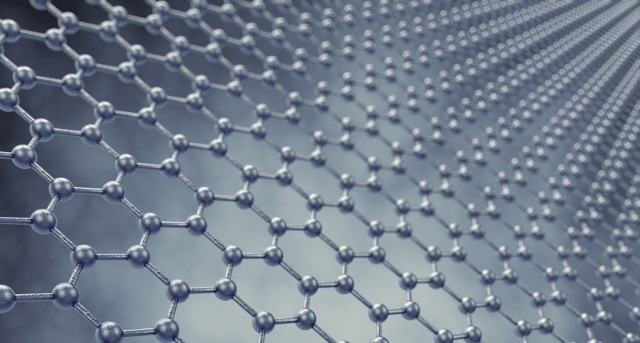Chemistry researchers at Boston College, USA, and Nagoya University, Japan, have developed the first example of a new form of carbon - warped nanocarbons which resemble graphene in structure, but with pentagons and heptagons inserted into the 2D hexagonal structure.

Disrupting graphene's perfectly regular structure can radically alter it's physical properties
New forms of carbon
Graphene was isolated in 2004, and won a Nobel Prize for the researchers at the University of Manchester who created it. The "wonder-material" was the latest in a line of newly discovered forms of carbon, including carbon nanotubes and buckminsterfullerene. Before these were discovered, starting in 1985 with fullerenes, the only known forms, or allotropes, of carbon were diamond and graphite.
Graphene's incredible properties stem from it's structure - it is a single sheet of carbon atoms, linked together in a hexagonal "honeycomb" network which gives it excellent mechanical strength, thermal conductivity, and unique electrical properties.
Controlling graphene defects
In ordinary graphene, it has been shown that defects can form in the sheet, where a ring might have 5 or 7 carbon atoms instead of 6. This warps the perfect 2D nature of the sheet slightly, and can affect the material's properties.
Now, this international research team has found a way to manipulate the formation of these defects to purposefully alter the properties. By embedding relatively large numbers of these 5- and 7-membered rings in a precisely controlled chemical synthesis, they have created what they have called "grossly warped nanogr phene".
phene".
Professor Lawrence T. Scott of Boston College commented on the properties of the new material:
"Our new grossly warped nanographene is dramatically more soluble than a planar nanographene of comparable size, and the two differ significantly in color, as well. Electrochemical measurements revealed that the planar and the warped nanographenes are equally easily oxidized, but the warped nanographene is more difficult to reduce."
This research mostly aims to increase our understanding of graphene and related carbon nanomaterials, and will probably not see any practical use for quite some time.
However, the successful demonstration of controlled synthesis of these complex large molecules will contribute in the long term towards the "bottom-up" fabrication of advanced nanoscale devices.
Sources